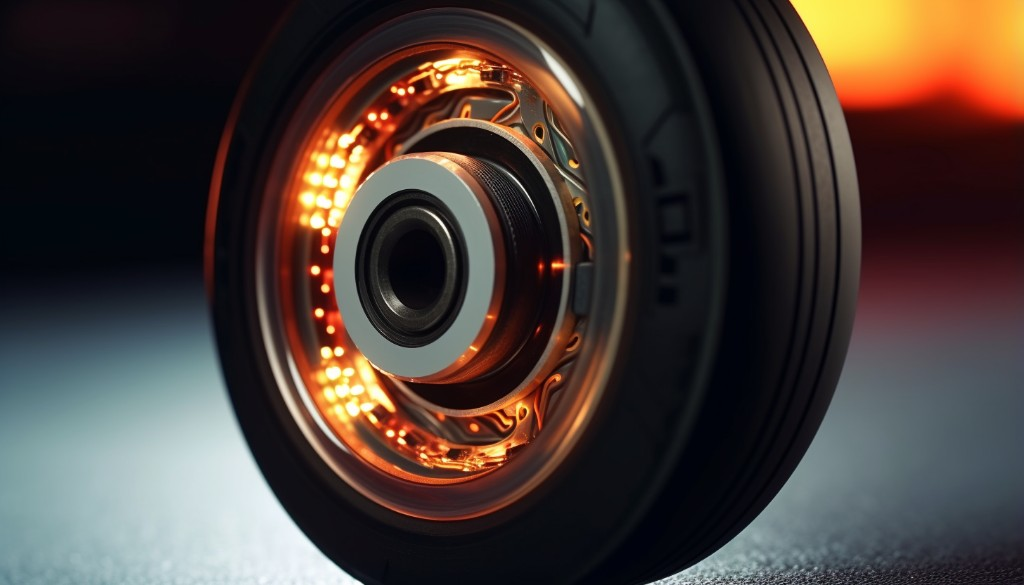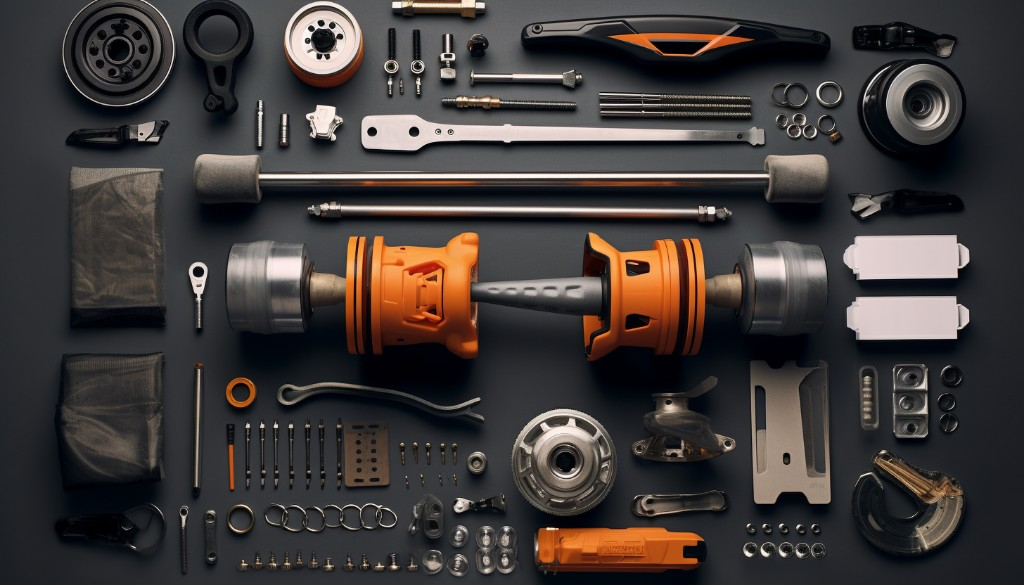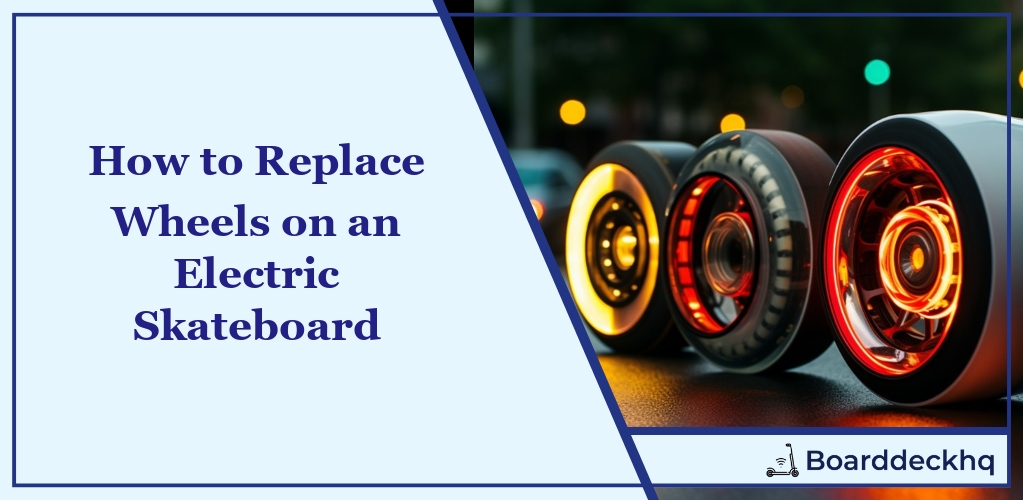Have you ever felt the wobble of a worn-out wheel beneath your feet as you glide on your electric skateboard? It’s not just an inconvenience — it’s a safety hazard. Replacing your wheels is a necessary skill, one that can save you time, money, and potential injuries. You may think it’s a daunting task, but with the right knowledge and tools, it’s a breeze. Ready to ride smoothly and safely again?
What we’ll cover
- The Importance of Replacing Wheels
- Preparations for Wheel Replacement
- Detailed Guides for Front and Rear Wheel Replacement
- Upgrading to Larger Wheels
- Making Use of Video Tutorials
- Addressing Potential Replacement Issues
- Post-Replacement Maintenance Tips
- Testing Your E-Skateboard Post-Replacement
- Tips for Extending Wheel Lifespan
Now, let’s roll right into the nitty-gritty of replacing your electric skateboard wheels. Trust us, your ride—and your safety—depend on it.
Understanding the Need to Replace Wheels
Ever wondered why your electric skateboard isn’t cruising as smoothly as it used to? Like most moving parts, the wheels of your e-skateboard take the brunt of the ride, bearing your weight and absorbing the impact of all those bumps and cracks in the road. They inevitably wear down over time, which can lead to a less than stellar ride review.

The condition of the wheels directly impacts your ride’s comfort, speed, and safety. Imagine trying to navigate a sharp turn with worn-out wheels! It’s like trying to run a marathon in shoes with worn-out soles – not exactly safe or comfortable. Similarly, the motor electric components of your board can be affected by deteriorated wheels, causing decreased performance and potential damage. Therefore, it’s essential to regularly check your wheels and recognize when they need to be replaced.
Wear and Tear of Front Wheels and PU Sleeves
Just like how our shoes show signs of wear and tear, so do the wheels on our electric skateboards. The front wheels and PU sleeves often exhibit the most visible signs of damage.
You might notice:
- Fraying or splitting around the edges of the wheels.
- Flat spots or uneven surfaces on the wheel’s circumference.
- Cracks or deep grooves on the PU sleeves.
- The wheels don’t spin as freely as they used to.
Each time you remove replace your board’s wheels, it’s a good idea to check the PU sleeves for wear too. They’re like the cushioning in your running shoes, providing a smooth ride even on rough surfaces. So, when they start to wear down, you’ll feel every single bump and crack on your route.
Recognizing When to Replace the Wheels
Knowing when to replace your skateboard wheels can save you from an unexpected tumble or, worse, damage to your e-skateboard. But how can you tell if it’s time for new wheels?
Look out for these signs:
- Your ride feels bumpier or less smooth than usual.
- You find yourself working harder to maintain speed or struggling to pick up speed.
- The wheels look visibly worn, with visible flat spots, cracks, or deep grooves.
- Your skateboard’s turning radius has increased, making it harder to navigate sharp turns.
Even if you’ve invested in high-quality hubless wheel technology, it’s not immune to wear and tear. Remember, safety and a smooth ride should always be your priority. So, if your skateboard wheels are showing any of these signs, it’s probably time to start shopping for replacements.

By regularly checking your wheels and understanding when they need to be replaced, you can keep your electric skateboard running smoothly and safely. After all, your e-skateboard is only as good as its wheels.
Preparing for Wheel Replacement
As with most DIY tasks, replacing the wheels on your e-skateboard requires a little prep work. To ensure the process goes smoothly, you need to gather the necessary tools and choose the right replacement wheels.
Gathering Necessary Tools
The first step in your wheel replacement journey is assembling your toolkit. This doesn’t have to be a daunting task; you don’t need a mechanic’s garage filled with obscure tools. The essentials for replacing wheels on small electric vehicles like skateboards are relatively straightforward.
- Skate Tool: A skate tool is a multifunctional device that can handle most of the nuts and bolts on your board. It’s an essential item in any skater’s toolbox.
- Wrench: A wrench is handy for those stubborn nuts that refuse to budge.
- Screwdriver: A Phillips head screwdriver will do the trick for most e-skateboards.
- Bearing Press/Puller: This tool isn’t absolutely necessary, but it can make removing and installing bearings a lot easier.
- Soft Cloth: A cloth is useful for cleaning up the axle and bearings before installing the new wheels.
These tools can be easily found at your local hardware store, or you can add them to your cart online from reputable accessories brands. If you’re unsure about what specific tools you need, don’t hesitate to ask brands experts for advice.

Choosing the Right Replacement Wheels
The next crucial step is selecting the right replacement wheels for your e-skateboard. The wheels are the connection between you and the pavement, so it’s essential to make an informed decision.
Firstly, consider the size of your wheels. Smaller wheels offer quicker acceleration and are lighter, making them great for tricks and tight turns. Larger wheels, on the other hand, provide higher top speeds and a smoother ride over rough surfaces.
Secondly, consider the material of your wheels. Most skateboard wheels are made of urethane. Softer urethane wheels offer better grip and a smoother ride, but they wear out faster. Harder urethane wheels are more durable and slide easily, making them ideal for high-speed riding and sliding tricks.
Thirdly, consider the shape of your wheels. There are two main shapes: square-edged and round-edged. Square-edged wheels have more grip and are better for cruising and downhill riding. Round-edged wheels slide more easily and are better for freestyle riding.
Lastly, consider the color of your wheels. While this won’t affect your ride, it’s always fun to personalize your board with your favorite colors.
Remember to look for experts incentives when shopping for wheels, as these can sometimes provide you with discounts or other benefits. And don’t forget to use guides vehicles to ensure you’re choosing the right wheels for your specific e-skateboard model.

Once you’ve gathered your tools and chosen your replacement wheels, you’re ready to begin the wheel replacement process. But remember, while it’s exciting to upgrade your board, safety should always come first. So, take your time and make sure you’re comfortable with each step before moving forward.
Step-by-Step Guide to Replacing Front Wheels
Switching out the front wheels on your electric skateboard isn’t a Herculean task, and with the right guidance, it’s a breeze. Now that we have our tools and the correct replacement wheels from the previous sections, let’s dive into the actual process.
Here’s a detailed walkthrough:
- First, use your skate tool or wrench to unscrew the axle nut. This nut is what keeps your wheel in place, so handle it with care.
- With the axle nut removed, slide the wheel off the truck’s axle. There may be a couple of speed rings (tiny washers) on the axle; make sure to keep track of these.
- Once you have removed the old wheel, it’s time to install the new one. Slide the replacement wheel onto the axle. Make sure it spins freely; if it doesn’t, there might be an issue with the bearing fit or the axle itself.
- Place the speed rings back onto the axle if you had removed any, followed by the axle nut. Tighten the nut but ensure the wheel can still spin freely.
- Repeat these steps for the other front wheel.
And voila! You’ve successfully replaced the front wheels on your electric skateboard. I remember my first time doing this – I was so worried about messing something up, but it turned out to be much simpler than I thought! So don’t stress too much, you’ve got this!
Now that we’ve tackled the front wheels, let’s move onto the rear wheels. But remember to subscribe to our largest newsletter for more news guides on maintaining your e-skateboard!

Step-by-Step Guide to Replacing Rear Wheels
Replacing the rear wheels can be a tad trickier due to the additional components involved, particularly if your board has hub motors. But worry not! Just like before, we’ll guide you through the process step by step. Here’s what you need to do:
- Remove the axle nut and any speed rings, just as we did with the front wheels.
- Slide off the wheel carefully. If your skateboard has hub motors, be cautious as the wheel will be connected to the motor.
- Once the wheel is off, you’ll see the motor’s PU sleeve. This is what we’re going to focus on next.
Detailed Process for Replacing PU Sleeves
If your board’s rear wheels have PU sleeves, they’ll likely need replacing over time. Here’s how to do it:
- Start by removing the old PU sleeve from the motor. You can do this by gently sliding it off.
- Before installing the new sleeve, clean any dirt or debris from the motor’s surface.
- Slide the new PU sleeve onto the motor. Make sure it fits snugly and securely.
- With the new sleeve in place, reinstall the wheel onto the axle, followed by any speed rings and the axle nut.
- As before, make sure to tighten the axle nut securely while ensuring the wheel can still spin freely.
- Replacing PU sleeves may seem daunting at first – I know it did for me! But with a little patience and practice, you’ll get the hang of it in no time.
Remember, regular maintenance of your electric skateboard is crucial for its longevity. So make sure to subscribe to our newsletter small for news guides vehicles accessories brands experts incentives and more!
Now that we’ve replaced both front and rear wheels, you might wonder what if you wanted to upgrade to different size wheels? Well, that’s exactly what we’ll be discussing in the next section!
Upgrading to Different Size Wheels
In the wide world of electric skateboards, one change that can drastically alter your ride is upgrading to different size wheels. Just like with traditional vehicles, the size of the wheels on your e-skateboard can affect everything from speed to ride smoothness. It’s a bit like swapping out the tires on a car for winter driving or off-road adventures. Depending on what you want from your board, you might consider switching to larger 90mm or 105mm wheels.

Before diving into the specifics, let’s consider why you might want to upgrade your wheels. Larger wheels can offer a smoother ride, particularly over rough or uneven terrain. They can also provide increased speed, although this may come at the cost of reduced acceleration. In contrast, smaller wheels can provide better maneuverability and quicker acceleration. The choice really depends on your personal preferences and riding conditions.
I first discovered the impact of wheel size when I subscribed to a review newsletter for e-skateboard enthusiasts. I was fascinated by how something as simple as wheel size could dramatically change the performance of my board.
Procedure to Switch to 90mm Wheels
If you’ve decided to upgrade to 90mm wheels, here’s a step-by-step guide to get you started:
- Purchase the right wheels: When shopping for 90mm wheels, look for high-quality options that are compatible with your electric skateboard model. Pay attention to factors like durometer (hardness) and material quality. These will affect both durability and ride quality.
- Gather your tools: You’ll need a skate tool or wrench to remove the old wheels and install the new ones. Other useful items include a soft cloth or towel (to protect your board while working) and a small container to hold the nuts and bolts.
- Remove the old wheels: Using your skate tool, loosen and remove the nut on the end of the axle. Slide off the old wheel, making sure to keep track of any spacers or washers.
- Install the new wheels: Place your new 90mm wheel on the axle, followed by any spacers or washers. Screw the nut back onto the axle, but don’t fully tighten it just yet.
- Check wheel spin: Give the wheel a good spin to ensure it’s seated properly and spins freely. If all is well, you can tighten the nut. Be careful not to overtighten as this can impede wheel rotation.
- Repeat for other wheels: Follow the same process for each of the remaining wheels.
Remember, you’re not just changing wheels; you’re upgrading your ride with vehicles accessories designed to enhance your e-skateboarding experience.

Procedure to Switch to 105mm Wheels
Switching to 105mm wheels follows a similar procedure. Here’s how to do it:
- Purchase suitable wheels: 105mm wheels are larger and can offer a smoother ride over rough surfaces. As with 90mm wheels, look for quality materials and compatibility with your electric skateboard.
- Gather your tools: You’ll need the same tools as before – a skate tool or wrench, a soft cloth, and a small container for nuts and bolts.
- Remove the old wheels: Loosen and remove the axle nut with your skate tool, then slide off the old wheel. Keep track of any spacers or washers.
- Install the new wheels: Slide your new 105mm wheel onto the axle, followed by any spacers or washers. Replace and loosely tighten the nut.
- Check wheel spin: Spin the wheel to ensure it’s seated correctly and spins freely. If it does, you can fully tighten the nut, being careful not to overtighten.
- Repeat for remaining wheels: Follow the same steps for each wheel.
Upgrading your wheels can breathe new life into your electric skateboard, providing a smoother ride and potentially more speed. Whether you’re an e-skateboarding pro or a beginner, it’s a change worth considering.

Closing Thoughts
Replacing wheels on an electric skateboard is a necessary maintenance task that ensures the optimal performance and longevity of your ride. This process involves understanding when to replace the wheels, preparing for the task, and following a detailed guide to replace both front and rear wheels. An essential aspect is also knowing how to upgrade to different size wheels if desired. Utilizing video tutorials can provide visual aid for a more seamless replacement process. It’s equally important to be aware of potential issues that could arise during the replacement and their solutions. Post replacement, regular maintenance and proper testing of your skateboard can further prolong the life of your wheels and enhance your skateboarding experience. Remember, taking care of your electric skateboard is not just about preserving your investment, but also about ensuring a safe and enjoyable ride every time.
Frequently Asked Questions
What are the signs that my skateboard wheels need replacement?
Your skateboard wheels need replacement when they show visible signs of wear and tear such as cracks, flatspots, or significant reduction in diameter. You may also notice a change in ride quality, like less smoothness or decreased speed.
How do I choose the right replacement wheels for my electric skateboard?
Choosing the right replacement wheels involves considering factors like wheel diameter, durometer (hardness), and material composition. The choice should align with your riding style and the terrain you usually skate on.
What tools do I need to replace the wheels on my electric skateboard?
To replace the wheels on your electric skateboard, you’ll typically need a skate tool or a wrench to loosen the axle nuts, and possibly a set of bearings if you’re not reusing the old ones.
Can I upgrade my skateboard wheels to a larger size?
Yes, you can upgrade to larger wheels for more speed and smoother rides over rough terrains. However, ensure your board has enough clearance to avoid wheel bite.
What are some common issues I might face when replacing my skateboard wheels and how can I solve them?
Common issues when replacing skateboard wheels include difficulty in removing old wheels, trouble fitting new wheels, or misalignment. These can be solved by using the correct tools, ensuring you have the right size wheels, and aligning them properly during installation.
